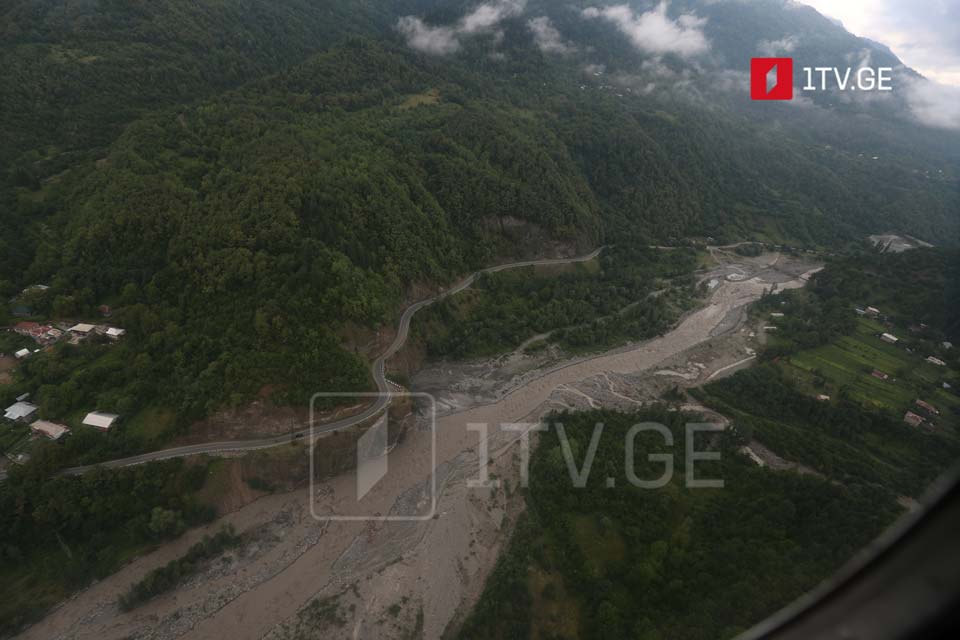Several factors contributed to rapid development of Shovi landslide, 1st assessment says
“On August 3, several factors contributed to the rapid development of a complex natural event, which is practically impossible to predict anywhere in the world,” states the National Environment Agency’s first evaluation of the Shovi landslide, which killed at least 18 people, including children.
Natural geological and hydrometeorological events (glacier melting, rain, rock avalanches in the headwaters, landslide-erosive processes, and mudslides) collided in the Bubisskali valley, generating extreme mudflow, according to the report.
A report citing data analysis from the Chanchakhi River hydrological station stated that no water blockage was detected before the landslide. It added that mudflow would have likely reached the cottages within 8-10 minutes.
As of now, eighteen people remain missing. Over 200 people have been moved to a safe area.

